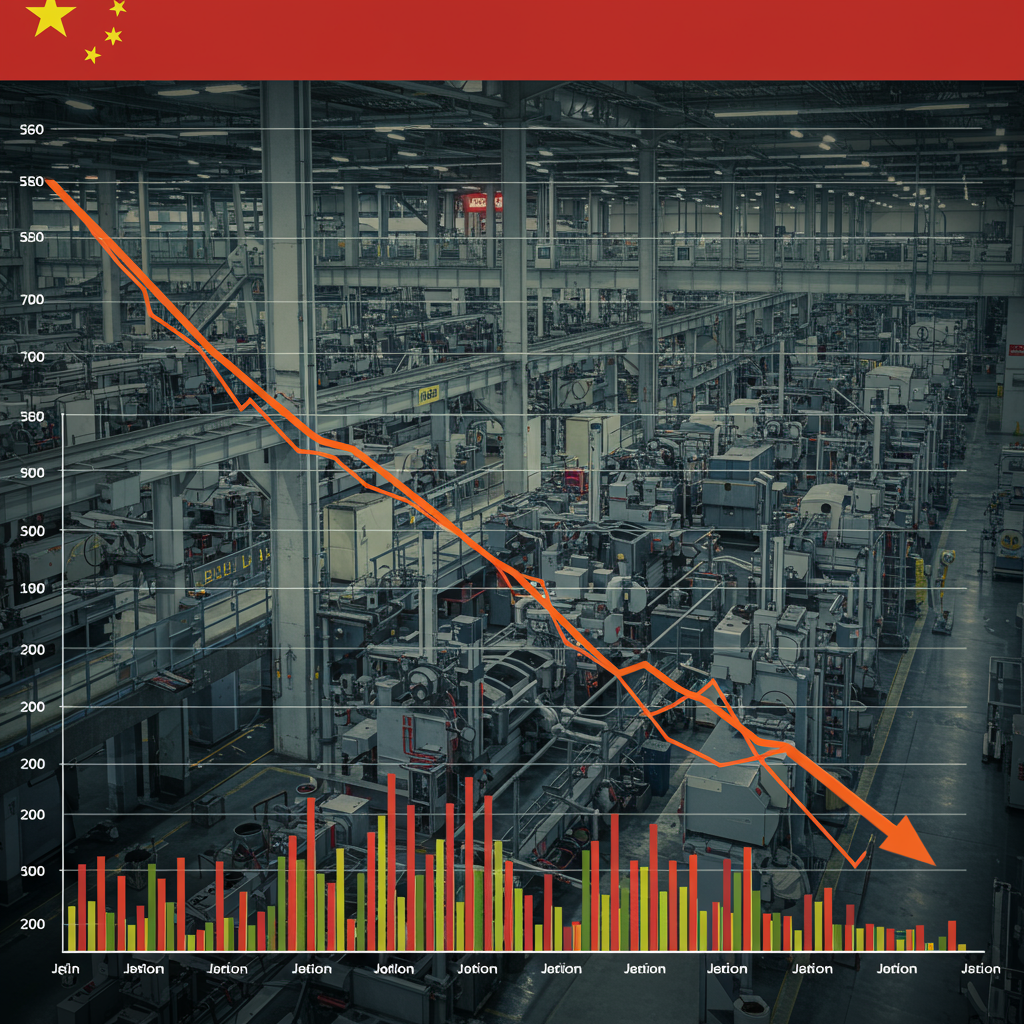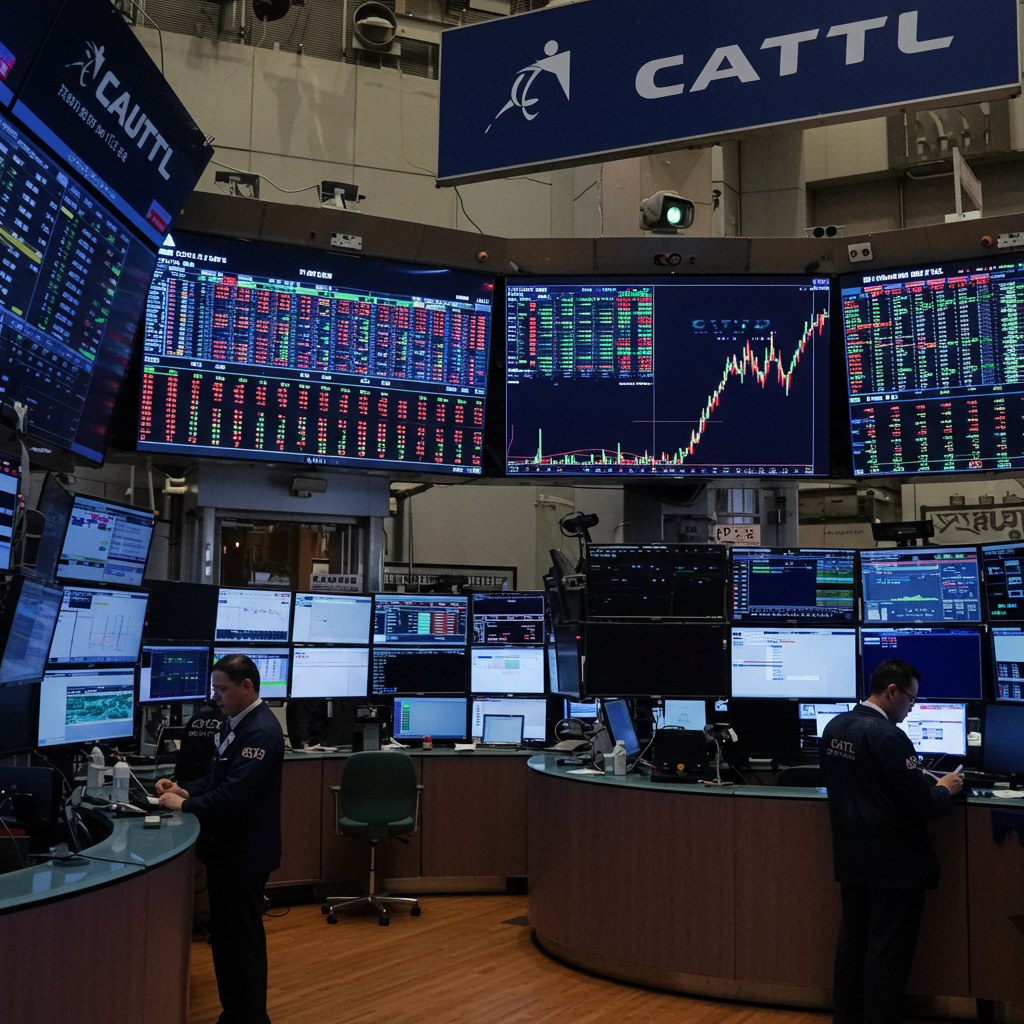china’s economic data released in June painted a stark picture for manufacturers. Producer prices saw their largest annual decrease in nearly two years, plunging 3.6% from the same month last year. This decline was steeper than economists had anticipated and signals a deepening wave of deflationary pressure rippling through the world’s second-largest economy.
Manufacturers are battling weakening consumer demand and intense price wars. This challenging environment significantly impacts business profitability and future investment decisions. While consumer prices showed a slight uptick, the persistent drop in factory gate prices highlights fundamental imbalances within the economy.
Decoding China’s June Price Data
The National Bureau of Statistics (NBS) released key inflation figures for June. The Producer Price Index (PPI), which tracks prices charged by manufacturers, fell 3.6% year-on-year. This marked the biggest drop since July 2023, based on LSEG data, and exceeded the 3.2% fall forecast in a Reuters poll. It extends a deflationary trend in producer prices that began in September 2022.
In contrast, the Consumer Price Index (CPI), measuring everyday goods and services costs, edged up 0.1% year-on-year in June. This return to growth followed four consecutive months of decline and surpassed the flat reading forecast by economists in a Reuters poll.
However, this modest increase was primarily influenced by specific factors. Stripping out volatile food and energy prices, the core CPI rose 0.7% from a year ago. According to NBS data, this was the largest increase in 14 months, suggesting some underlying stability but still indicating subdued inflationary pressures in the consumer sector.
The Weight of Deflation on Producers
The significant fall in producer prices directly impacts manufacturing margins. Businesses are forced to cut prices to compete, leading to lower revenues and profitability. This cycle can stifle investment and production growth. The original data showed that profits at industrial firms had already plunged 9.1% year-on-year in May, marking the steepest fall since October of the previous year.
Experts point to several intertwined issues driving this deflation. Persistent overcapacity in many manufacturing sectors means supply outstrips demand. This forces companies to offload excess inventory at lower prices. Combined with muted domestic consumer spending, factories face immense pressure on their bottom lines.
This situation is colloquially known in China as “neijuan,” or “involution.” It describes intense, often excessive, competition that leads to diminishing returns for all participants. Companies engage in fierce price cutting simply to survive, eroding overall market health and profitability.
Government Scrutiny and Economic Response
Chinese policymakers are acutely aware of the negative consequences of these aggressive price wars. In a recent high-level economic policy meeting chaired by President Xi Jinping, excessive price competition was criticized. Policymakers highlighted how companies resort to deep discounts to attract consumers and clear stockpiles, partly exacerbated by external pressures like US tariffs impacting export markets.
Beijing has signaled its intention to address this issue. There are pledges to tighten regulations on aggressive price-cutting strategies. The focus is shifting towards guiding businesses to improve product quality and orderly phasing out outdated production capacity. This strategic shift aims to move the economy away from relying solely on low prices for competitiveness and towards higher value production.
The recent uptick in consumer prices in June received a temporary boost from government-backed initiatives. A trade-in scheme offering subsidies for household appliances, electronics, and electric vehicles encouraged some consumer spending. However, economists caution that the impact of such schemes might fade in the second half of the year, potentially weakening underlying consumer inflation if the fundamental oversupply issue isn’t resolved.
Overcapacity vs. Demand
The core imbalance appears to be persistent overcapacity in manufacturing alongside insufficient domestic demand. While trade-in programs can provide short-term stimulus, they don’t fundamentally alter the supply-demand dynamics. As one economist noted, without robust policy stimulus targeting domestic consumption, escaping the deflationary spiral seems challenging.
Despite domestic challenges, China’s export sector has shown unexpected resilience in recent months. Driven partly by increased shipments to Southeast Asian nations, this resilience has somewhat offset the impact of US tariffs and fluctuating global demand. China’s overall exports grew 4.8% in May and 8.1% in April year-on-year.
Some analysts suggest that this export performance may influence Beijing’s urgency for massive domestic consumption stimulus. Policymakers might adopt a wait-and-see approach, potentially delaying significant stimulus measures until external demand weakens considerably. However, relying on exports alone doesn’t address the internal deflationary pressures stemming from overcapacity and weak domestic spending.
The June price data underscores the complex economic challenges China faces. The deep dive in producer prices reflects structural issues in manufacturing and demand. While consumer prices saw a marginal gain, experts remain cautious about calling an end to deflation, citing ongoing pressures in the property sector and the embedded nature of price wars. The path forward likely requires a delicate balance between managing overcapacity, stimulating internal demand, and navigating the evolving global trade landscape.
Frequently Asked Questions
Why are China’s producer prices falling so sharply?
China’s producer prices are falling significantly primarily due to a combination of factors: weak domestic demand, intense price wars among manufacturers (“neijuan”), and persistent overcapacity in various industrial sectors. When factories produce more goods than the market can absorb, they are forced to lower prices to sell inventory, leading to deflation at the producer level.
How did consumer prices fare in China during June?
China’s consumer prices saw a modest increase in June, rising 0.1% year-on-year. This marked a return to growth after four consecutive months of decline. While the overall index showed a slight positive movement, the core CPI, excluding food and energy, rose 0.7%, the highest in 14 months, suggesting some underlying, albeit weak, inflationary impulse in specific consumption areas.
What do these inflation/deflation figures mean for China’s economic outlook?
These figures highlight ongoing deflationary risks, particularly in the manufacturing sector. The steep fall in producer prices suggests pressure on business profitability and investment. Experts believe escaping this deflationary spiral without significant policy stimulus to boost domestic demand is difficult. The data indicates that while consumer spending saw a temporary lift from specific policies, the underlying economic momentum remains challenged by overcapacity and structural imbalances.




